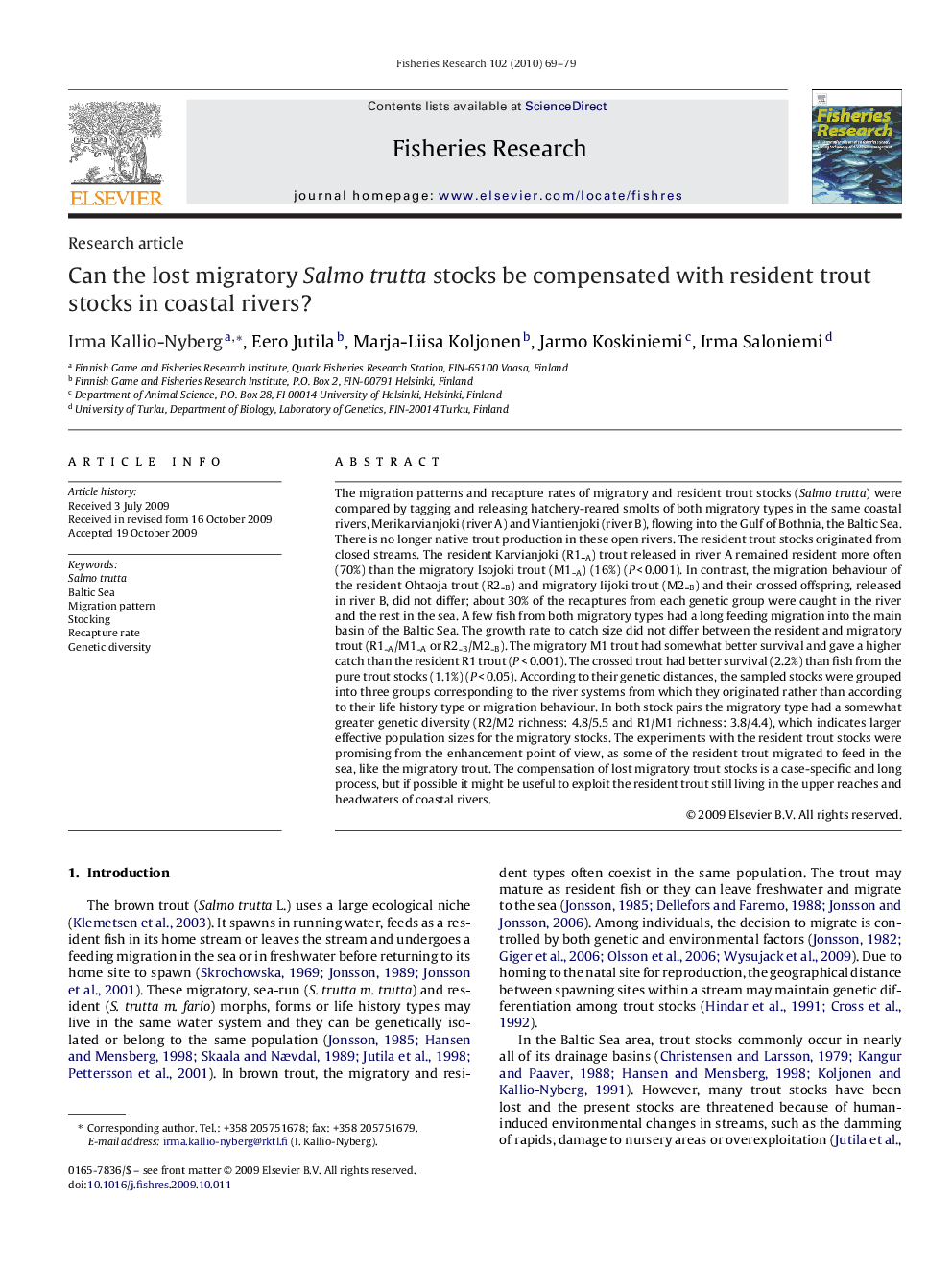| کد مقاله | کد نشریه | سال انتشار | مقاله انگلیسی | نسخه تمام متن |
|---|---|---|---|---|
| 4543783 | 1626851 | 2010 | 11 صفحه PDF | دانلود رایگان |

The migration patterns and recapture rates of migratory and resident trout stocks (Salmo trutta) were compared by tagging and releasing hatchery-reared smolts of both migratory types in the same coastal rivers, Merikarvianjoki (river A) and Viantienjoki (river B), flowing into the Gulf of Bothnia, the Baltic Sea. There is no longer native trout production in these open rivers. The resident trout stocks originated from closed streams. The resident Karvianjoki (R1_A) trout released in river A remained resident more often (70%) than the migratory Isojoki trout (M1_A) (16%) (P < 0.001). In contrast, the migration behaviour of the resident Ohtaoja trout (R2_B) and migratory Iijoki trout (M2_B) and their crossed offspring, released in river B, did not differ; about 30% of the recaptures from each genetic group were caught in the river and the rest in the sea. A few fish from both migratory types had a long feeding migration into the main basin of the Baltic Sea. The growth rate to catch size did not differ between the resident and migratory trout (R1_A/M1_A or R2_B/M2_B). The migratory M1 trout had somewhat better survival and gave a higher catch than the resident R1 trout (P < 0.001). The crossed trout had better survival (2.2%) than fish from the pure trout stocks (1.1%) (P < 0.05). According to their genetic distances, the sampled stocks were grouped into three groups corresponding to the river systems from which they originated rather than according to their life history type or migration behaviour. In both stock pairs the migratory type had a somewhat greater genetic diversity (R2/M2 richness: 4.8/5.5 and R1/M1 richness: 3.8/4.4), which indicates larger effective population sizes for the migratory stocks. The experiments with the resident trout stocks were promising from the enhancement point of view, as some of the resident trout migrated to feed in the sea, like the migratory trout. The compensation of lost migratory trout stocks is a case-specific and long process, but if possible it might be useful to exploit the resident trout still living in the upper reaches and headwaters of coastal rivers.
Journal: Fisheries Research - Volume 102, Issues 1–2, February 2010, Pages 69–79